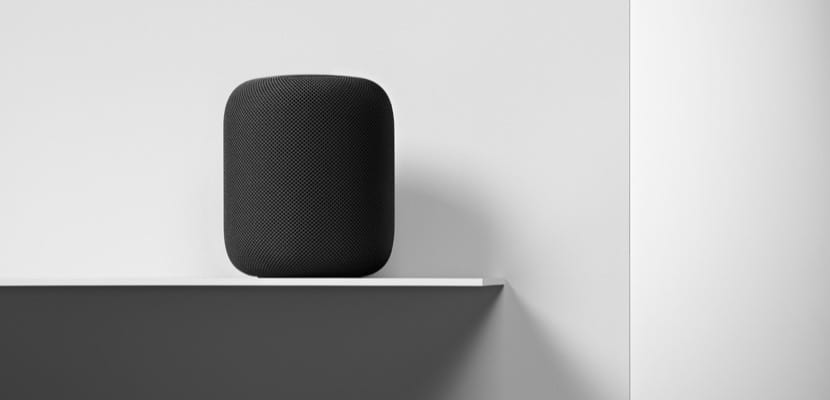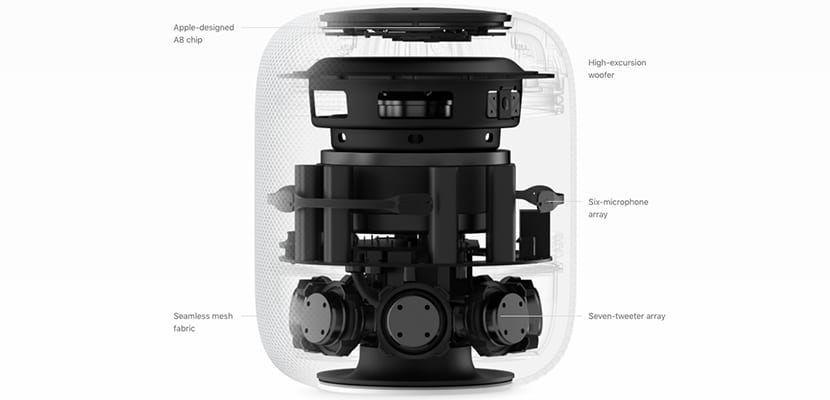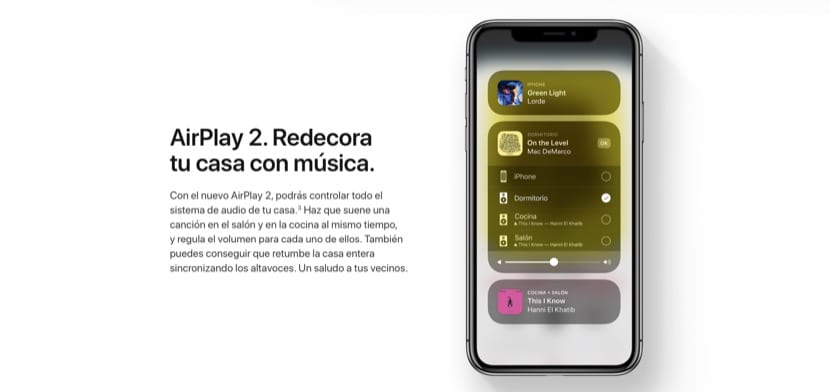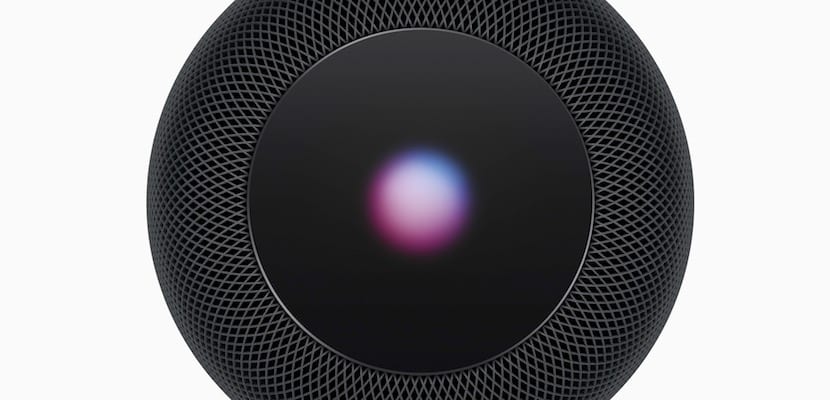
The wait is over, at least for what is the HomePod launch. Although in a very limited way, The Apple speaker can now be reserved starting Friday, January 26, with direct sale two weeks later. It is the first product in a new category of devices that promise to be a hit in the coming years.
What will it do? How can we control it? Will we need Apple Music to be able to listen to music? Can we answer calls with him? And do them? What applications will be compatible with the new speaker? How much will it cost? When will it arrive in other countries? There are many questions that remain pending and that we answer in this article.
A speaker with integrated Siri
The first thing to make clear is what the HomePod is, something that may seem obvious after months of talking about it, but it really is not so obvious. The HomePod is a speaker, basically that, without more, but with integrated Siri. Unlike other devices you are comparing with, such as Amazon Alexa or Google Home, It is not a virtual assistant that has a speaker, quite the opposite. For Apple, the primary function is that of a speaker, and this was made very clear during its presentation. We can use Siri for certain functions, but Cupertino has not wanted to turn the HomePod into a "made for Siri" device.

And if we see how it is built we immediately realize it. The internal components of the HomePod include, among many other things, seven tweeters each with its own amplifier and translator, with a spatial arrangement designed to achieve excellent sound quality no matter where we place it or where we are in the room. A high excursion woofer to achieve powerful bass, six microphones that will be able to pick up our voice from anywhere even if we are listening to music with the speaker, and an A8 processor that will be in charge of processing our orders and in addition to ensuring that the sound is the best possible, analyzing the ambient noise and even the room where we have placed the HomePod. Apple is so concerned that the HomePod has the highest sound quality that it even supports FLAC audio, without compression, which will be a delight for the most exquisite.
AirPlay to listen to music
AirPlay (and AirPlay 2 in the near future) is the way in which we will be able to transmit sound from our device to the HomePod. For those who are not familiar with this type of transmission, it is all about using WiFi connectivity to transmit audio (and video on compatible devices). It has the enormous advantage that as long as your devices are connected to your home network, the distance at which they are will not equal, because it is independent of Bluetooth, and also the data transmission is much greater so the sound quality is also frankly better than when using Bluetooth.
AirPlay 2 will arrive later, as well as the possibility of using two speakers to achieve spectacular stereo. With AirPlay 2 we will have the possibility of using Multiroom, that is, be able to control multiple speakers located in different rooms listening to the same thing in all of them or have each one reproduce something different. It's a feature that Apple announced long ago and that speaker manufacturers will be able to implement in their products, and it will come to the HomePod later with a simple software update.

AirPlay is compatible with your iPhone, iPad, Mac and Apple TV, so from any of these devices you can transmit the audio to your HomePod so that it plays them without the slightest problem. It doesn't matter if you use Spotify or Apple Music, you can even listen to your favorite movies by watching them from Apple TV and doing AirPlay to the HomePod, or with your Mac computer. You start the playback on your device and transfer it to the HomePod, this is how it works.
But there is a very important detail: the HomePod has Bluetooth 5.0, but at the moment it cannot be used to connect devices, so since AirPlay is something exclusive to Apple, you can only use Apple devices with your HomePod. Forget, at least for now, to connect your Android phone or your TV with Bluetooth, although it is not ruled out that Apple in the future enable this option, it would not make sense to waste that Bluetooth 5.0.
Your HomeKit central
The HomePod can be your HomeKit hub. Until now only an Apple TV or an iPad could exercise this function, but now the new Apple speaker is added. This means that you can connect your HomeKit compatible accessories to the HomePod and control them via Siri even when you are not at home, as long as you have an internet connection. Creating automations, rules or instructing Siri to turn lights on and off, raise blinds or activate automatic garden watering will be possible just by talking, without your iPhone nearby.

Siri controls the HomePod
We talked before about AirPlay and how we can handle the HomePod from our iPhone, iPad or Apple TV, but it is not the idea that Apple has of this speaker. In Cupertino they want us to get used to using Siri to perform tasks once and for all, and if with the AirPods we have already taken the first steps, now with the HomePod we will finish convincing ourselves. Without the need for any other device, you can start the playback of Apple Music, Beats Radio, your music purchased in iTunes or your favorite podcast just by asking Siri. We can invoke the Apple assistant through the classic "Hey Siri" but also by holding down the top of the HomePod.
Who will be able to control the HomePod using Siri? In the absence of being able to test everything, it seems to indicate that there will be a main user and other "guests" who will be able to perform more basic tasks. As long as the user whose Apple ID is configured on the HomePod will be able to send messages, set reminders or notes and other number of functions, guests can start music playback without problems. It is logical that a speaker is not restricted to a single user, but we do not yet know how Apple is going to differentiate the voices and establish different degrees of user.
Besides Siri there will be another way to control the HomePod, using the top which is really a small touch screen. One touch to start playback, two to go forward, three to go back. Touch the "+" to increase the volume or the "-" to lower it, and as we have already mentioned, press and hold to invoke Siri. At the moment these are the controls that Apple has added to that touch surface, but they may change in future updates.

Other HomePod Features
As we said at the beginning of the article, the HomePod is mainly a speaker, but the fact that it has Siri and that it can be connected to our iPhone or iPad allows us to use other functions that a conventional speaker cannot. These include, for example, sending messages, transferring phone calls from your iPhone or creating notes and reminders. We can also listen to the news of the day or the weather forecast, as well as traffic conditions and sports scores. We can do all this through our voice, using Siri.
But not only can we use Apple applications, but we can also perform tasks with third-party applications such as WhatsApp, Telegram and other third-party applications. Messaging, notes and reminders are the applications that for now we can use with the HomePod, as long as they are compatible with SiriKit. To perform this function we must have our iOS device connected to the network, since the applications actually run on it, not on the speaker.
Availability and price
HomePod can be reserved as of Friday, January 26 in the United Kingdom (£ 319), United States ($ 349) and Australia (Australian $ 499), but until two weeks later it will not be possible to buy directly nor will it be received by those who have made their reservations. This very limited launch will be expanded in the spring with two more countries, France and Germany, without a specific date. It is unknown when new countries will be added to the list. The HomePod is available in two colors, black and white, and they are the only options we have to choose from, as there are no different storages or finishes.
The fact that the release is restricted to English-speaking countries has a lot to do with the fact that it currently only works in English. So if you buy a HomePod abroad you can use it in any country, but for now you can only understand with Siri in English. When Apple expands the languages, your HomePod can be configured with any of them.